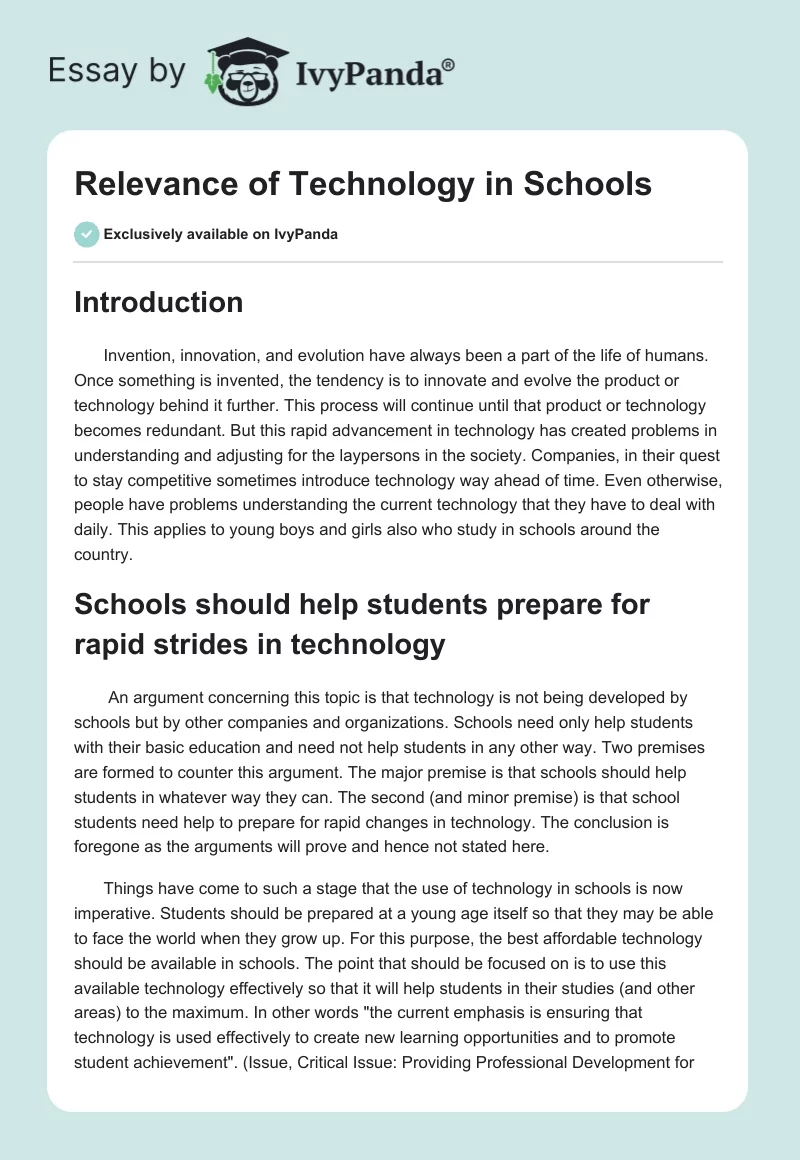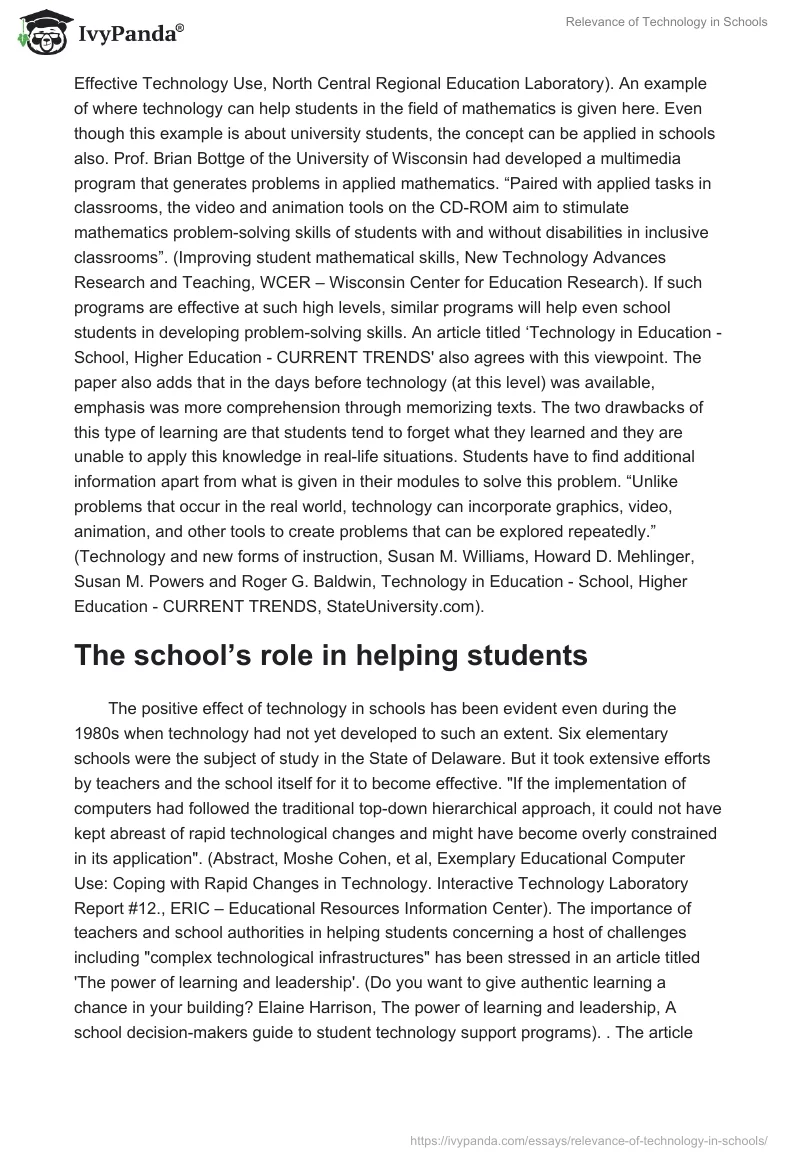Introduction
Invention, innovation, and evolution have always been a part of the life of humans. Once something is invented, the tendency is to innovate and evolve the product or technology behind it further. This process will continue until that product or technology becomes redundant. But this rapid advancement in technology has created problems in understanding and adjusting for the laypersons in the society. Companies, in their quest to stay competitive sometimes introduce technology way ahead of time. Even otherwise, people have problems understanding the current technology that they have to deal with daily. This applies to young boys and girls also who study in schools around the country.
Schools should help students prepare for rapid strides in technology
An argument concerning this topic is that technology is not being developed by schools but by other companies and organizations. Schools need only help students with their basic education and need not help students in any other way. Two premises are formed to counter this argument. The major premise is that schools should help students in whatever way they can. The second (and minor premise) is that school students need help to prepare for rapid changes in technology. The conclusion is foregone as the arguments will prove and hence not stated here.
Things have come to such a stage that the use of technology in schools is now imperative. Students should be prepared at a young age itself so that they may be able to face the world when they grow up. For this purpose, the best affordable technology should be available in schools. The point that should be focused on is to use this available technology effectively so that it will help students in their studies (and other areas) to the maximum. In other words “the current emphasis is ensuring that technology is used effectively to create new learning opportunities and to promote student achievement”. (Issue, Critical Issue: Providing Professional Development for Effective Technology Use, North Central Regional Education Laboratory). An example of where technology can help students in the field of mathematics is given here. Even though this example is about university students, the concept can be applied in schools also. Prof. Brian Bottge of the University of Wisconsin had developed a multimedia program that generates problems in applied mathematics. “Paired with applied tasks in classrooms, the video and animation tools on the CD-ROM aim to stimulate mathematics problem-solving skills of students with and without disabilities in inclusive classrooms”. (Improving student mathematical skills, New Technology Advances Research and Teaching, WCER – Wisconsin Center for Education Research). If such programs are effective at such high levels, similar programs will help even school students in developing problem-solving skills. An article titled ‘Technology in Education – School, Higher Education – CURRENT TRENDS’ also agrees with this viewpoint. The paper also adds that in the days before technology (at this level) was available, emphasis was more comprehension through memorizing texts. The two drawbacks of this type of learning are that students tend to forget what they learned and they are unable to apply this knowledge in real-life situations. Students have to find additional information apart from what is given in their modules to solve this problem. “Unlike problems that occur in the real world, technology can incorporate graphics, video, animation, and other tools to create problems that can be explored repeatedly.” (Technology and new forms of instruction, Susan M. Williams, Howard D. Mehlinger, Susan M. Powers and Roger G. Baldwin, Technology in Education – School, Higher Education – CURRENT TRENDS, StateUniversity.com).
The school’s role in helping students
The positive effect of technology in schools has been evident even during the 1980s when technology had not yet developed to such an extent. Six elementary schools were the subject of study in the State of Delaware. But it took extensive efforts by teachers and the school itself for it to become effective. “If the implementation of computers had followed the traditional top-down hierarchical approach, it could not have kept abreast of rapid technological changes and might have become overly constrained in its application”. (Abstract, Moshe Cohen, et al, Exemplary Educational Computer Use: Coping with Rapid Changes in Technology. Interactive Technology Laboratory Report #12., ERIC – Educational Resources Information Center). The importance of teachers and school authorities in helping students concerning a host of challenges including “complex technological infrastructures” has been stressed in an article titled ‘The power of learning and leadership’. (Do you want to give authentic learning a chance in your building? Elaine Harrison, The power of learning and leadership, A school decision-makers guide to student technology support programs). . The article stresses that the school is duty-bound to help the student-facing problems in all situations including complex technology.
Conclusion
Technology will develop whether one likes it or not. This technology will increasingly be used in all walks of life including school education. Not only that, if used effectively, technology can be used to enhance student capabilities in many ways. But this is only possible if the student is helped in overcoming problems by the teachers individually and the school as a whole.


